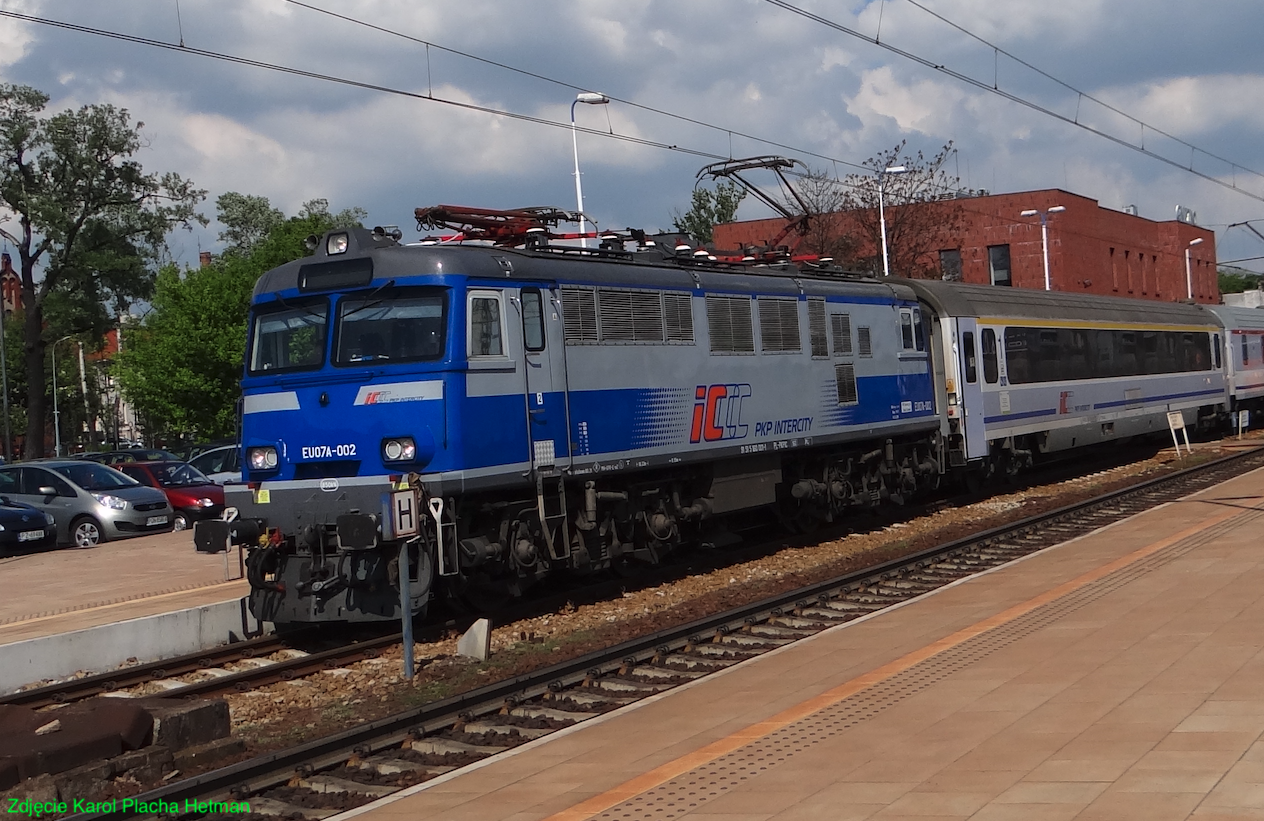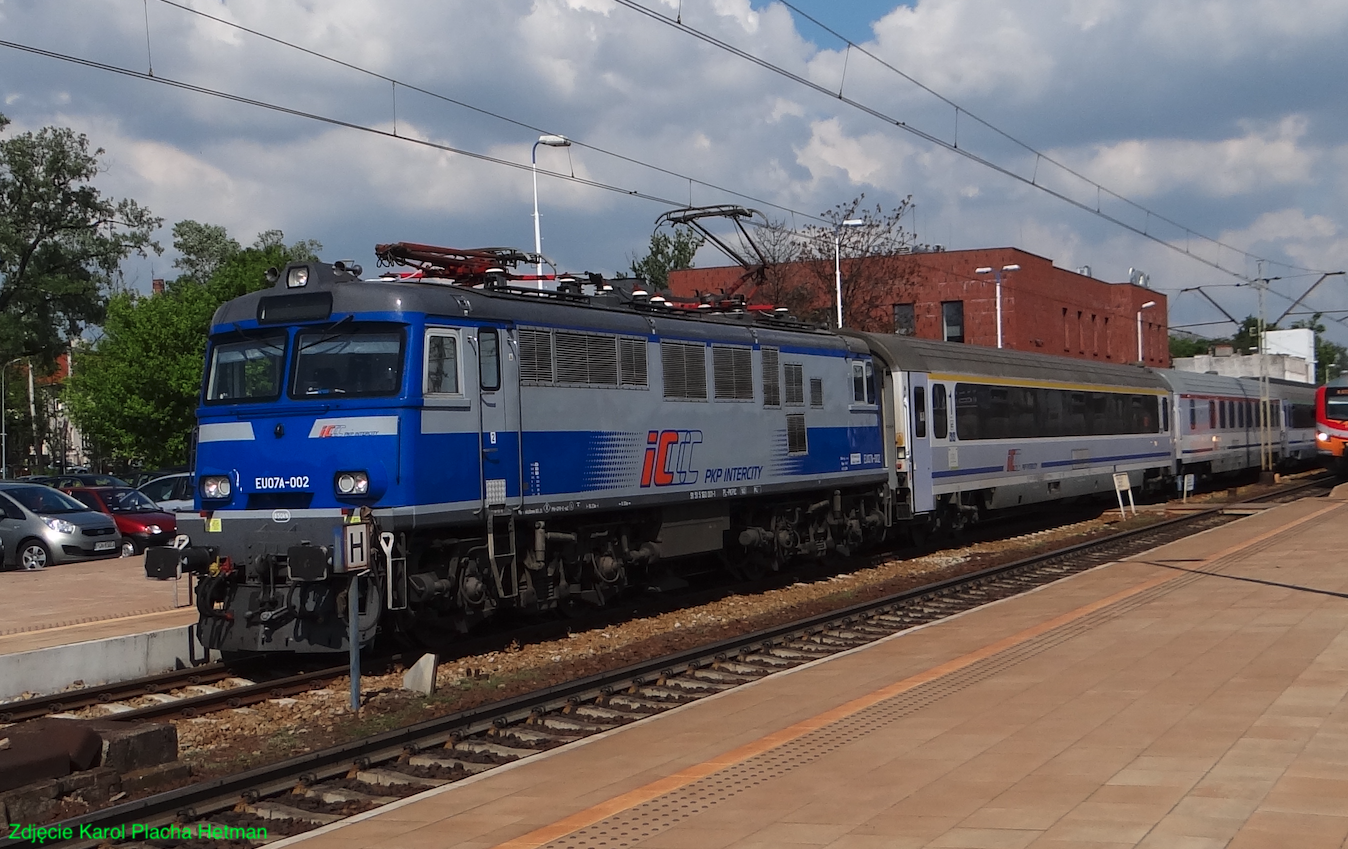Gniezno 2024-01-18
EU07A Electric Locomotives.



History of the EU07A design.
After the socio-economic changes in 1989, following the "round table" with numerous conflicts, the Polish Railways were systematically destroyed. The procedure lasted for 20 years. Fortunately, he came to his senses. It turned out that the rolling stock was outdated, the locomotives had technology from 50 years ago, and the passenger cars were manufactured in the 1970s. Only EP09 electric locomotives were able to drive fast trains at a speed of 160 km/h. The first thing that could be done was to modernize the existing locomotives. Especially the EU07 series, of which there were the most. Modernizations were carried out to various extents, depending on the requirements of the ordering parties and the size of their wallets.
The most extensive modernization of EU07 electric locomotives was carried out by the plant in Oleśnica. This modernization was carried out at the request of PKP InterCity in the period 2010-2014. At that time, locomotives of the EU07A series, type 303Ea, were built, but only 3 examples. The vehicles were equipped with a drive system with new, more powerful asynchronous traction motors and new gears, which ensured the locomotive speed up to 160 km/h. Only the frames and bogie frames remain of the old EU07 type 303E locomotives.
The vehicles received a modern IGBT VVVF frequency start, new converters, shaft bearings, microprocessor control and a modern brake panel system connected to electropneumatic and electrodynamic brakes. There are LED train report displays on the fronts, above the windows. Two instead of three windows were installed in the front of the locomotive.
The locomotive power increased to 3.2 MW and the maximum speed to 160 km/h. During tests, the EU07A locomotive reached 192 km/h. Each traction engine has a power of 800 kW. Asynchronous AC motors type EY541X4. The vehicle's bogies have been adapted for a speed of 160 km/h. Cylindrical roller bearings with higher load-bearing capacity and higher limiting speeds were used in the axle boxes of wheel sets, and the bogie de-stressing and damping system was rebuilt. Smoothing dampers were installed between the bogie frame and the locomotive body support. A wheel flange lubrication system and an ABS system were used.
Electronic control and diagnostics as well as a modern pneumatics system were used. FT-1600-3000 type inverters manufactured by Medcom were installed. The braking system is equipped with recuperation, i.e. recovery of braking energy. Modern converters of the ENI-PL3000/130/S type, manufactured by Enika, were installed. The locomotive received LED headlights. A new radiotelephone and GPS/GSM system were installed.
The locomotive body was rebuilt, with smooth sheets (not grooved) and numerous new ventilation grates. Stainless steel was used. The door layout has been changed. Half current collectors were installed. The driver's cabin was fully modernized; electroheating windows, thermal and acoustic insulation were replaced and new ergonomic telescopic seats were used. Air conditioning has been installed. The locomotives were deprived of multiple control.
T-T EU07A data:
Modernization contractor: ZNTK Oleśnica. Maximum speed 160 km/h. Length 15.90 m. Weight 80,000 kg. Bo'Bo' axle system.
Written by Karol Placha Hetman
